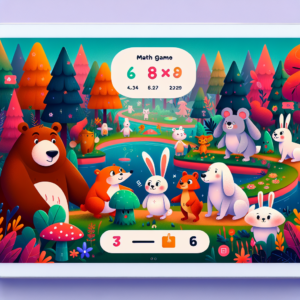
Mind Reading Game
The Mind Reading Game is a fun and engaging activity often used in social settings or icebreakers, where participants attempt to guess what another person is thinking about, usually a word or a number. It combines elements of psychology, deduction, and intuition, and can reveal how well people can read social cues or predict thoughts based on limited information.
Basic Principles and Psychology Behind It
1. Nonverbal Cues: Mind reading often relies on interpreting body language, facial expressions, and other nonverbal signals. People naturally give off subtle hints that can help guide guesses.
2. Pattern Recognition: Humans are wired to recognize patterns. When playing this game, participants often draw on their experiences and knowledge of the person’s likes, dislikes, or common sectors of thought to make educated guesses.
3. Social Dynamics: The game taps into interpersonal dynamics. How well you know someone can significantly affect your ability to “read their mind,” which can add a layer of strategy and fun as you adapt to different players.
4. Psychological Effects: The game often elicits feelings of surprise, joy, and competition, playing into cognitive biases, such as the illusion of control or the overestimation of one’s own abilities.
Step-by-Step Guide to Playing
1. Gather Your Players: Form a group of at least three people. The more, the merrier!
2. Choose the ‘Mind Reader’: Select one person to be the “mind reader” for the first round. This person will have their eyes closed or turned away during the guessing phase.
3. Select a Topic: The mind reader chooses a category (number, color, animal, etc.) to focus the game. Make sure everyone is on the same page about what is being guessed.
4. Player Selection: The other participants should choose a specific item within that category (e.g., if the category is animals, one player may think of “dog”).
5. Clue-Breaking Phase: The mind reader opens their eyes and begins asking questions to guess what the chosen item is. The other players can answer “yes,” “no,” or provide additional clues.
6. Guessing Phase: The mind reader continues asking questions until they feel confident to make a guess or if time runs out.
7. Reveal and Switch: Once the mind reader makes a guess, the item is revealed. Rotate roles so everyone gets a turn.
Tips for Improving Accuracy
1. Ask Open-Ended Questions: Instead of yes/no questions, try questions that require more explanation (e.g., “What color is it?” or “Is it a domestic or wild animal?”).
2. Look for Cues: Pay attention to the other players’ body language and facial expressions to gauge their reactions as you ask questions.
3. Limit Yourself: Set a fixed number of questions (e.g., 10 questions) to make the game more challenging and improve focus.
4. Stay Calm and Collected: Anxiety can impair your intuition; stay relaxed and focused on the person you’re trying to read.
Common Mistakes to Avoid
1. Overthinking: Try not to overthink every guess. Sometimes your first instinct is correct.
2. Neglecting Interpersonal Knowledge: Consider how well you know the other person, as their preferences and thoughts will affect your guesses.
3. Dominating the Conversation: Ensure everyone has a chance to play equally; if one person dominates, it can lead to frustration.
4. Failing to Adapt: Be flexible and willing to change your guessing strategy based on feedback and the responses given by players.
Fun Variations to Try with Friends
1. Speed Rounds: Limit the amount of time for guessing to make it more exciting. For example, allow 30 seconds for the mind reader to guess after asking questions.
2. Themed Nights: Pick a specific theme for the evening (e.g., movies, music, books) where the items chosen are related to that theme.
3. Team Play: Split into teams, allowing one mind reader per team. This creates a collaborative guessing environment.
4. Using Props: Introduce props or cards with images or words to help the mind reader gather thoughts visually.
5. Incorporate Mimes: Instead of asking questions, the mind reader can use gestures or mimes to interact without speaking.
The Mind Reading Game fosters creativity and enhances social interaction, making it a perfect choice for parties or gatherings. Happy playing!


